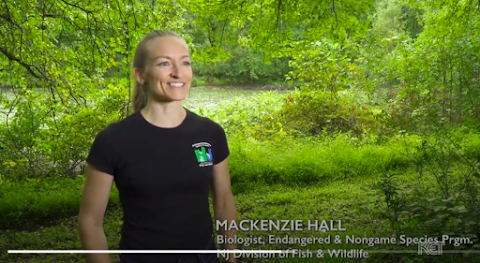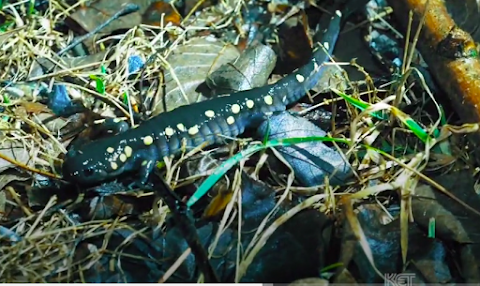 |
| Turtle using a tunnel under a roadway |
 |
| Mackenzie Hall, ENSP biologist |
CHANJ is featured in a new episode of the PBS show, EcoSense for Living. In this episode, "Wild Crossings," NJ is one of three major habitat connectivity projects, from North Carolina to New Jersey, that are helping wildlife navigate our increasingly developed world.
In this program, CHANJ comes in at the 14-minute mark but I recommend watching the entire 26-minute episode. The CHANJ portion is 12 minutes and covers salamander migrations, turtle tunnels, timber rattlesnakes, and various connectivity projects of the NJ Division of Fish and Wildlife. You will even meet the Division's bobcat scat-sniffing dog, Fly.
In finding food and finding mates and adapting to climate change, these creatures must overcome all the obstacles humans and nature have put in their way. This project, which once relied solely on volunteers physically moving the smaller amphibians, is using more sustainable methods to help animals find safe passage in our increasingly developed state.
This time of year is especially important for amphibians who are coming out of hibernation and moving to area with water and vernal pools for their short breeding season.
 |
| Volunteer transferring a frog across a roadway on a spring night |
 |
| Spotted salamander entering a tunnel |
Despite our well-known population density, we are fortunate that NJ is also a recognized leader in preserving open spaces for recreation, agriculture, and nature. Nearly one-third of the state’s landmass is now in permanent preservation. NJ boasts a higher percentage of publicly-owned forest land than any other state east of the Mississippi (Widmann 2004). Healthy, connected ecosystems are an important part of that.
 |
| Bobcat in the northern NJ "Bobcat Corridor" |
 |
| Bobcat using a dry terrestrial pathway under a road |
All images via pbs.org video
No comments:
Post a Comment